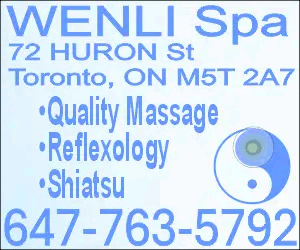
Photo Courtesy: John Mullen
By Dr. G. John Mullen, Swimming World Contributor
Sports massage is just what you need after a workout of competition to make you feel better, to ease muscle pain, and to relax. Right? Not so fast. Don’t crawl on the table just yet without understanding your needs and the right sports massage techniques for the job. Check out the dos and don’ts of getting a sports massage after swimming.
Why Get a Sports Massage After Swimming?
Many athletes get massages after swimming, and they incorporate sports massage into their therapy and training programs as well. Massage for swimmers offers athletes many benefits before and after a workout or competition:
- Promotes mental and physical relaxation
- Improves range of motion and mobility
- Improves circulation and reduces swelling
- Aids in pain management
- Improves flexibility
- Aids in recovery and reduced/delayed soreness
- Assists in preventing injuries from overuse
- Warms the muscles
- Reduces stress and mental fatigue
- Active sports massage stretches muscles and connective tissues
It is important to note that not all massage modalities are treated equally. The type of massage you need before a competition or workout is not the same as the one you need after.
- Relaxing massages, such as clinical massage and Swedish massage, do exactly what the name suggests: promotes relaxation. This is good on days that don’t involve training or competing. This massage includes effleurage and strokes to promote relaxation. This is the music on, lotion flowing, draped-body type of sports massage. This is not event massage.
- Pre-swim sports massage or preparation massage: This type of sports massage is brisk and active. It is done right before an event. The massage is designed to prepare the swimmer’s body for the event. The massage therapist focuses on the muscles and parts of the body that will be used for the event. The therapist employs rocking, shaking, stretching, range-of-motion techniques, compression and tapotement techniques to prepare the athlete.
- Post-swim sports massage: this type of massage is performed after an event, at least 10 to 15 minutes after. Once the swimmer has cooled down and rehydrated, the massage can begin. The massage is not a full-body massage. It consists of calming techniques, compression, therapeutic stretching, broadening strokes, and various effleurage techniques.
Swimmers and trainers who decide to incorporate sports massage into recovery need to know the ins and outs of the technique. Understand the dos and don’ts of massage before including it into your training plan.
Do:
- Stay hydrated.
- Practice self-myofascial release techniques.
- Use the right modalities and techniques for the preparation and recovery goals.
- Express pain, discomfort, and concerns with the therapist.
- Get recommendations from trusted professionals about therapists.
- Express your training and recovery needs with the therapist.
- Make sure the therapist has experience working with swimmers.
- Get a relaxing sports massage the week of the event.
- Practice self-care techniques.
- Make sure the massage therapist understands the rules and regulations established about massage, as defined in the USA Swimming Safe Sport Handbook.
- Work only with a licensed professional. You can find a licensed and board-certified therapist.
Don’t
- Receive a massage at an event in a private space. It must be out in the open.
- Receive a deep-tissue massage within 48 hours of competing. This can create muscle breakdown and soreness.
- Get on the table if you are feeling dizzy or dehydrated.
- Experiment with a new massage technique, plan, or therapist before or on the day of an event.
- Suffer through a painful massage. Getting a massage after swimming should promote relaxation and recovery; it should not hurt.
Replace recovery and rehabilitation techniques with massage. Incorporate massage into your training.
Massage is a great way for swimmers to maintain, prepare, and to recover. Massage therapy plays a large role in training programs for swimmers of all levels. You can find therapists at high school swim meets, triathlons, and professional swimming competitions. During the 2012 London Olympics alone, more than 800 therapists cared for athletes. Massage has become a necessary part of training and recovery, and you can find a board-certified therapist to complement your therapy plan.
This entry passed through the Full-Text RSS service - if this is your content and you're reading it on someone else's site, please read the FAQ at fivefilters.org/content-only/faq.php#publishers.











































































































